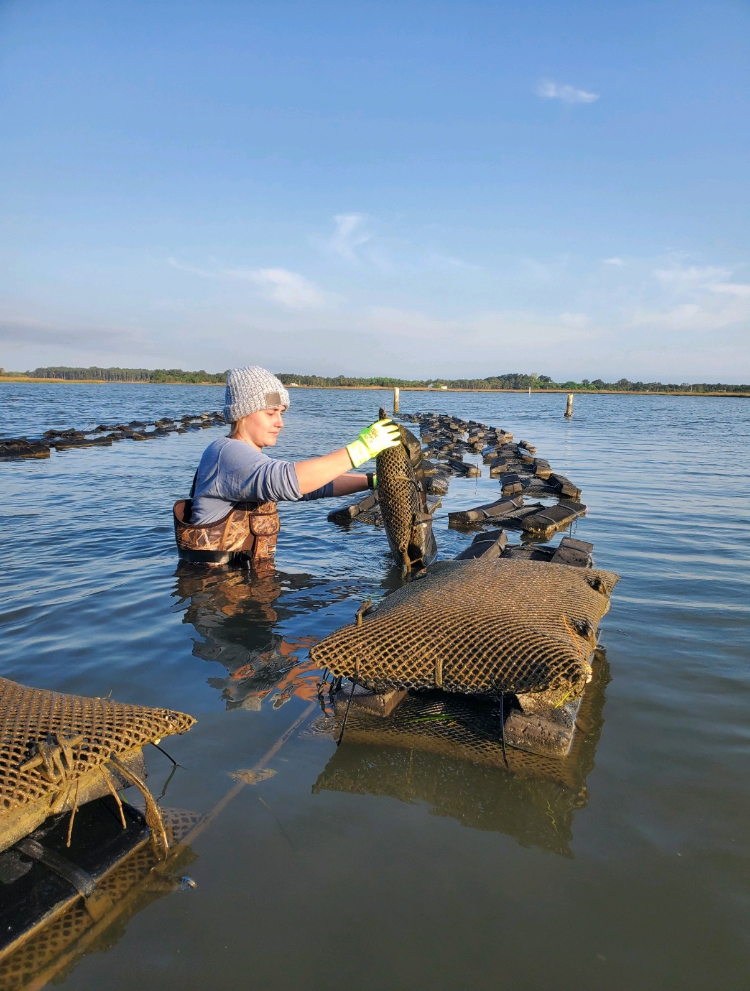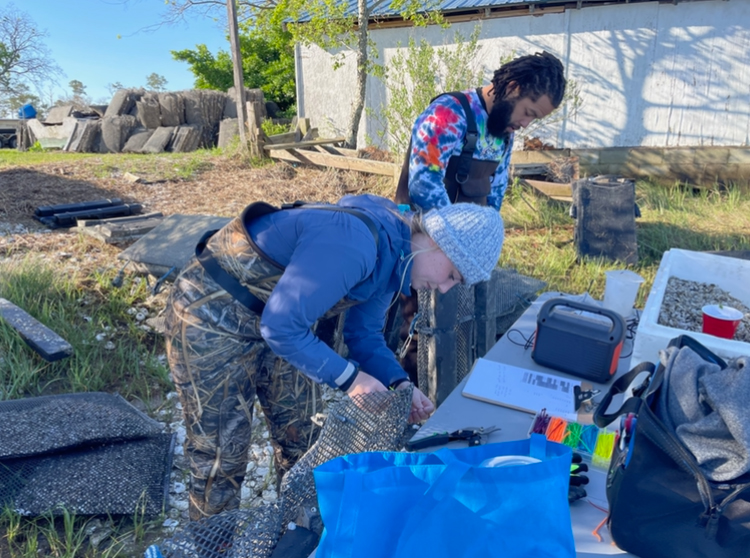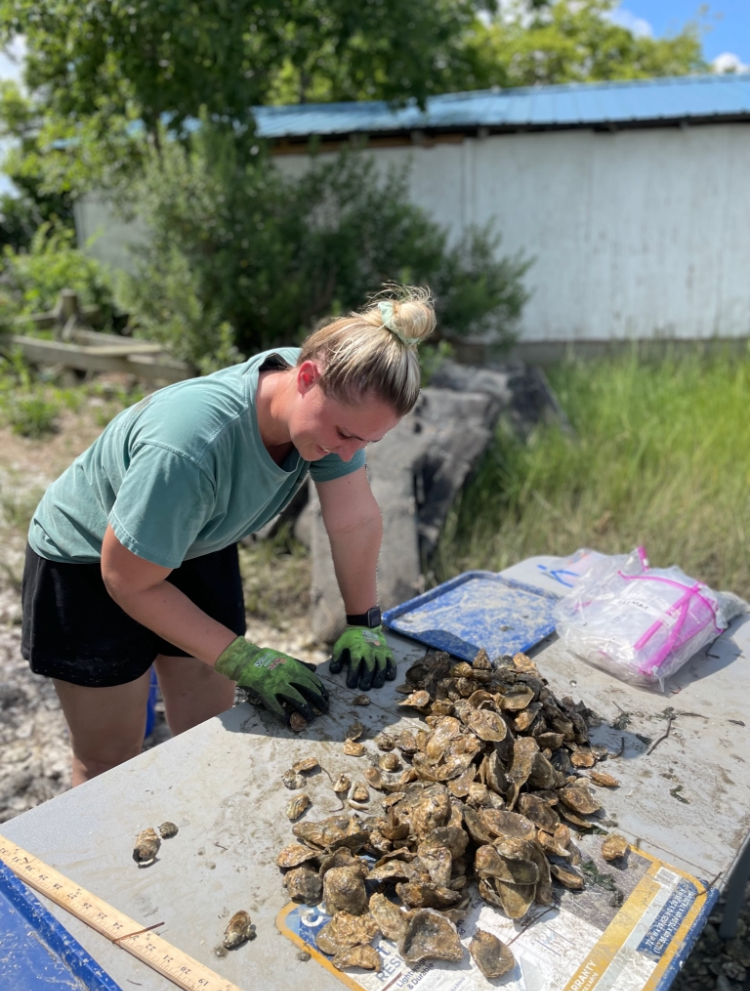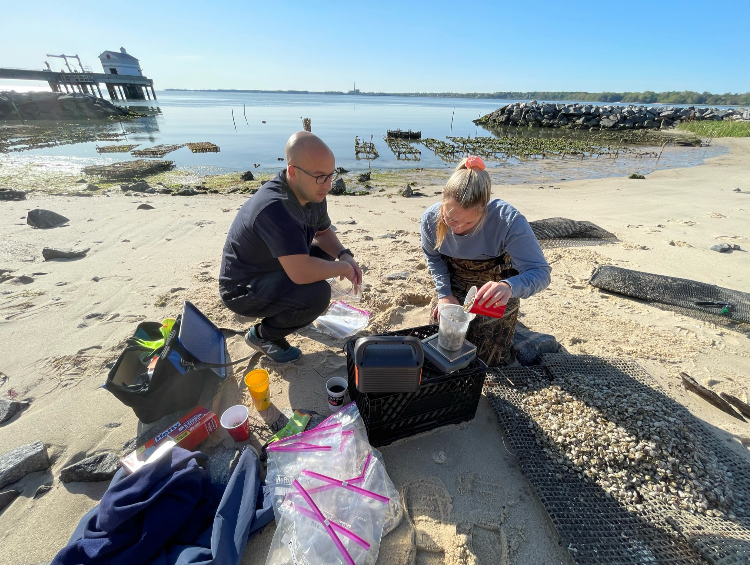Shellfish Aquaculture Production & Sustainability
Effect of biofouling and stocking density on microclimate in off-bottom oyster culture grow-out bags
Oyster farmers growing Crassostrea virginica are increasingly utilizing off-bottom culture practices as there is a potential to improve growth, survival, shell shape, meat quality, and product consistency relative to traditional methods. Despite this potential, sudden spring/summer mortality events impacting both on and off-bottom farms, occurring without apparent connection to disease or harmful algal blooms, have been observed along the East and Gulf Coasts, with mortality reaching 85% in 2014 at some Virginia farms. These mortality events could not be explained by changes in ambient water parameters (e.g., a sudden drop in salinity) and typically, the mortalities do not affect every farm in a given waterbody. This pattern suggests that the seed stock and/or the farming practices may be key factors in these mortality events. For the latter, farming practices can lead to substantially different grow-out conditions for oysters.
Conditions inside an oyster bag (dissolved oxygen, pH, turbidity, and chlorophyll-a) may vary from ambient conditions due to a spatio-temporal lag induced by reduced water exchange rates which may be exacerbated by biofouling and oyster stocking density. This ongoing project addresses three questions: 1) Do biofouling control (air-dried vs. not air-dried) and oyster stocking density (high, normal, and empty) decisions affect the microclimate (water quality parameters) inside grow-out bags; 2) Do any observed differences in the water parameters correlate with C. virginica performance, including oyster health and disease prevalence; and 3) What combination of farm practices can growers employ to maximize oyster performance while minimizing costs?
Results from this ongoing study suggest that farmers can influence the water parameters within their floating bags through various husbandry decisions, which could correlate to oyster performance. We hope to provide producers with better data so farmers can make more informed husbandry decisions while also identifying factors that could be driving these spring/summer mortality events.
|
|||
Comparison of bottom and floating cage oyster productionProject lead – Jordan Lynch Intensive aquaculture is the practice of raising oysters in containers through their life cycle to market. In Virginia, intensive aquaculture is dominated by two basic practices, bottom cages and surface floats. There are costs and tradeoffs in both practices, and the challenge for any new farmer is to determine which practice is cost effective and fits their business model best. The purpose of the project is to compare a series of metrics between oysters raised in floating cages versus those raised in bottom cages. Oysters are being raised to market size and undergo normal husbandry practices that include grading and sorting through the life cycle. At the same time, oysters will be measured for specific metrics at regular intervals. These metrics can be loosely divided into three categories: 1) Yield (growth and survival); 2) ‘Quality’ (e.g., shell shape, meatiness, etc.); 3) Consumer Satisfaction. Metrics include, but are not limited to, attributes such as: growth and survival, shell shape, meat fullness, color, cleanliness, shelf life, and willingness to pay; with the latter being assessed after oysters have reached market size later in the study. The study team will compile an information pamphlet/newsletter that will describe the study and the results. This literature will be distributed to various industry organizations and resources for distribution to the aquaculture community of practice. Examples may include sites such as the Shellfish Growers of Virginia, the VIMS Marine Advisory Services, the East Coast Shellfish Growers Association, etc. |


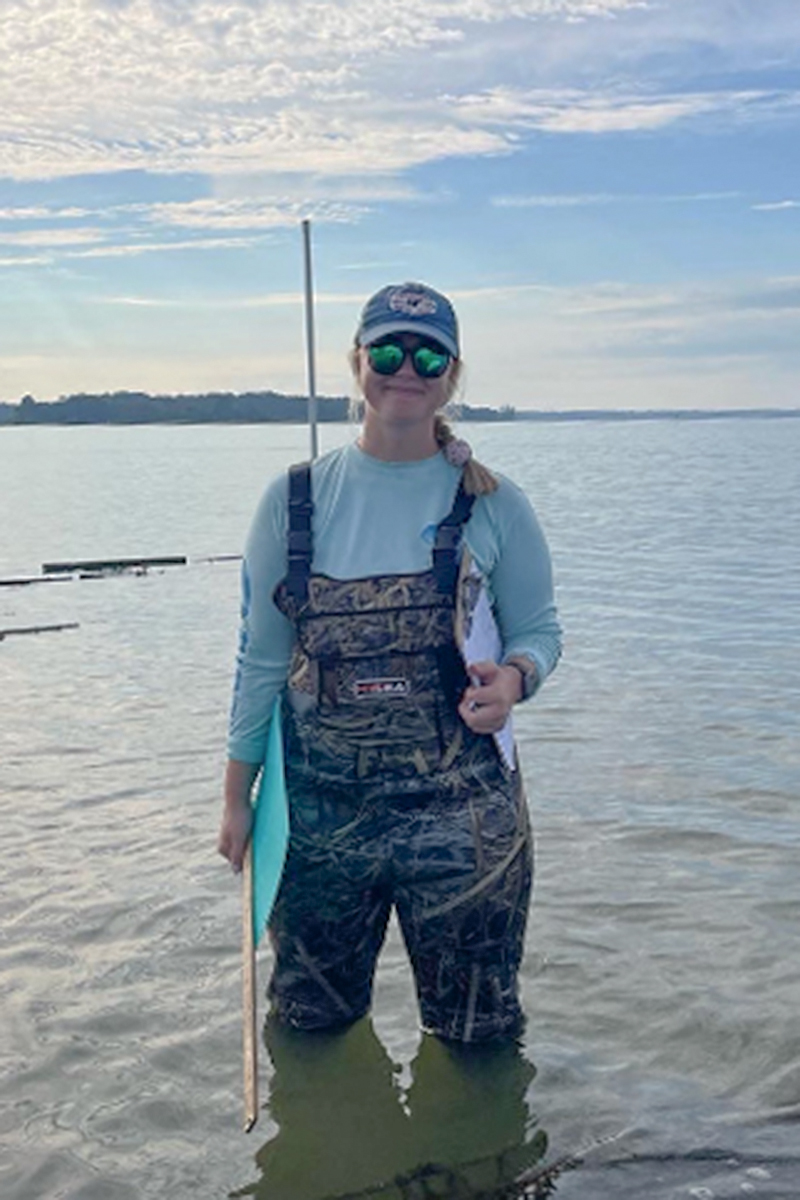 Project lead –
Project lead – 